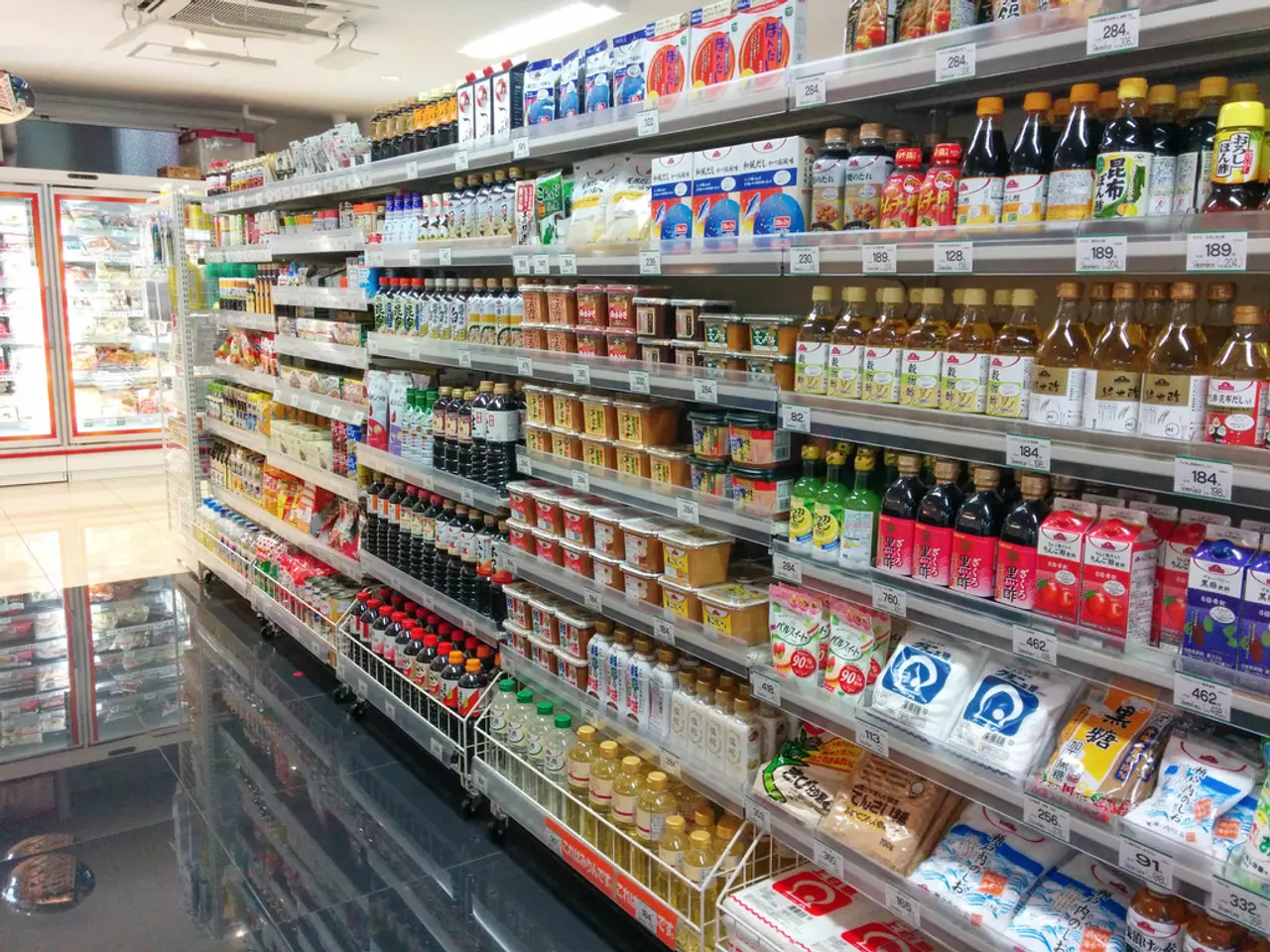Anticipated Items potentially facing a significant increase in cost within the next five years, mainly influenced by tariffs and inflation.
In recent times, policymakers have been grappling with the long-term implications of tariffs on consumer welfare and financial stability, particularly in the clothing and footwear sectors. This article delves into the projected impact of tariffs and inflation on consumer spending patterns for essential products over the next five years.
The tariffs on Chinese imports could lead to price increases for about 30% of U.S. apparel, with the footwear sector, where over half of shoes sold in the U.S. are sourced from China, being particularly vulnerable. As a result, consumers may seek more affordable alternatives or domestic products as tariffs drive up costs.
The increased prices, contributing to inflation that remains elevated near 3%, above the Federal Reserve’s 2% target, are expected to persist in the near term. This inflationary pressure is expected to act as a consumption tax on consumers, causing a reduction in spending due to higher prices, especially on imported goods subject to tariffs.
The burden of these higher costs falls disproportionately on low- and middle-income households. Economic analyses estimate tariffs could cost the average American household around $5,200 annually in higher expenses, making tariffs a regressive tax, hitting everyday essential goods, and reducing disposable income available for other spending.
The broader economy will feel this via slower real GDP growth, as consumers bear the brunt of higher prices imposed by tariffs. The tariff impact is expected to weigh on growth through late 2025 and into 2026, constraining consumer demand and business profit margins.
Elevated prices from tariffs combined with ongoing inflation have already made US consumers sharply sensitive to price increases, changing their purchasing behavior towards more cautious spending, especially on essentials affected by tariffs and inflation. Trade uncertainty and tariff policy remain significant risks that could delay relief in prices and impact inflation expectations, possibly prolonging consumer pressure over the medium term.
In response to these challenges, consumers might shift towards second-hand or refurbished products in the clothing and footwear sectors. They can also delay non-essential purchases or opt for more basic product models to reduce overall expenditure. Strategically adjusting purchasing habits, such as seeking domestic or alternative international suppliers not subject to tariffs, can help consumers offset higher prices.
In summary, tariffs and inflation will likely cause the middle class to spend more on essential products, reducing their discretionary income and changing spending patterns towards necessity and conservation. This pattern is expected to persist through the next five years, with a contraction in consumer spending dampening economic growth until inflationary forces, including tariffs, ease post-2026. The broader economic implications of these tariffs could exacerbate price pressures and hinder economic growth in the clothing and footwear sectors.
Read also:
- Gathering at the 2025 ECOS Fall Meeting: Embracing Ecological Innovation in New Mexico's Magical Terrain
- Frugal Meal Prep: Top 5 Tasty and Affordable Recipes Ideal for Students on a Budget
- Trump extends tariff ceasefire with China for 90 more days through presidential decree
- Leadership is in the hands of individuals lacking proper understanding and direction.




